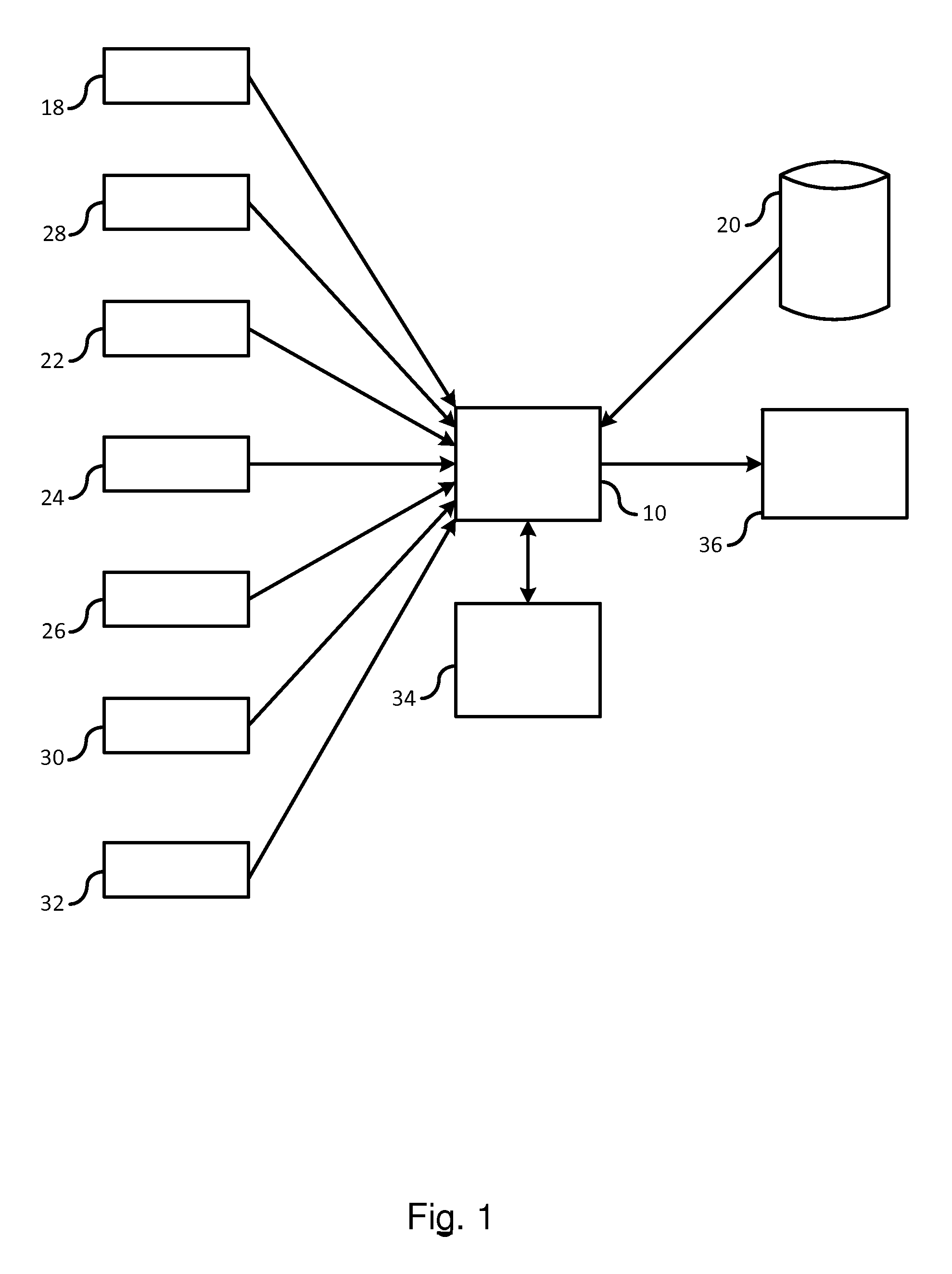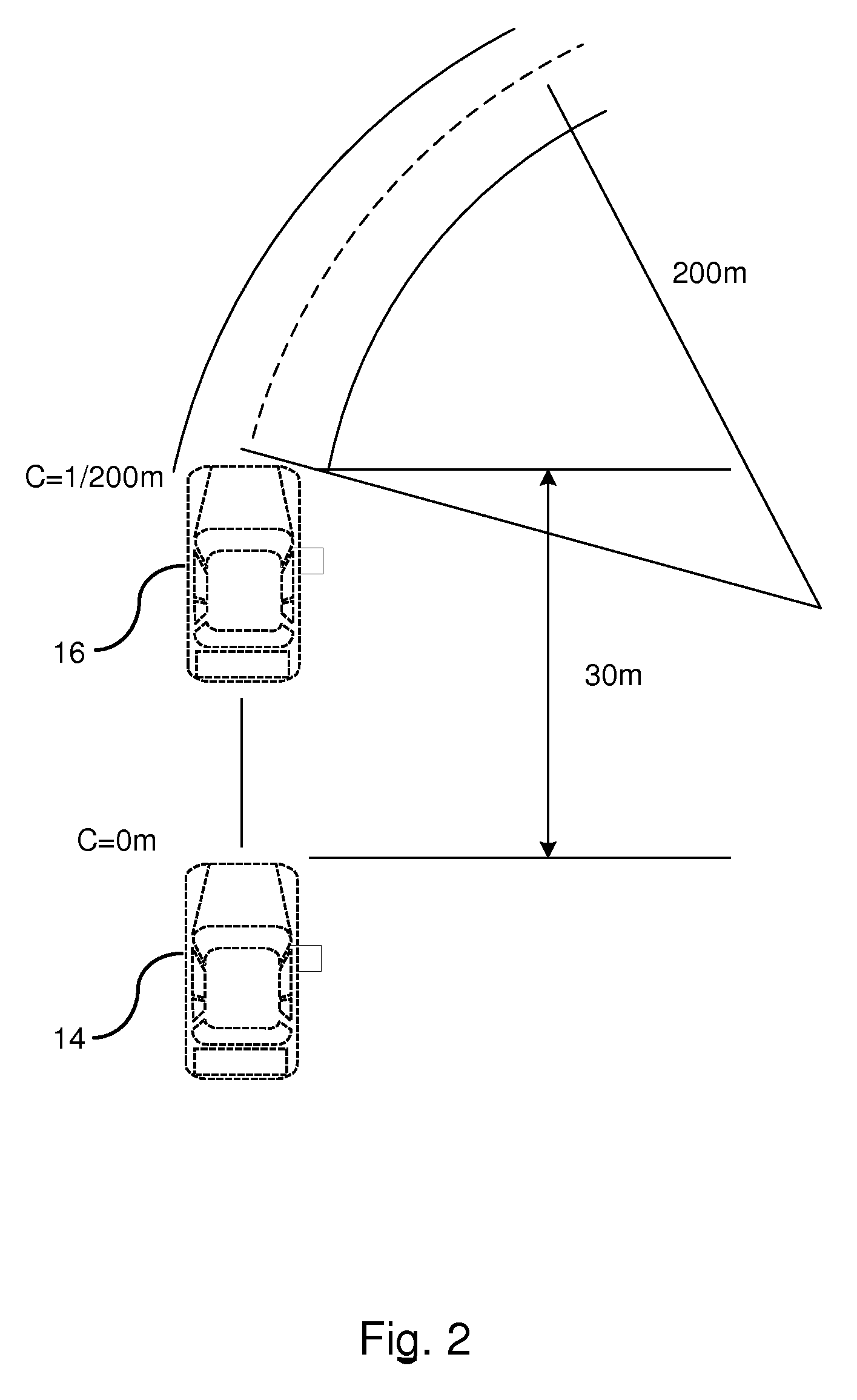Sensor-aided vehicle positioning system
a technology of vehicle positioning system and sensor, which is applied in the direction of navigation instruments, using reradiation, instruments, etc., can solve the problems of minor inconvenience in navigation, the minimum number of satellites required to accurately determine the position of the satellite receiver may not be available under certain conditions, and the error of gps positional accuracy may be as great as 30 meters
- Summary
- Abstract
- Description
- Claims
- Application Information
AI Technical Summary
Benefits of technology
Problems solved by technology
Method used
Image
Examples
Embodiment Construction
[0015]There is shown in FIG. 1 a sensor-aided vehicle positioning system. The system includes a processing unit 10 for determining a vehicle position on a traveled road. The processing unit 10, may be a standalone processing unit or may be integrated as part of existing system such as a navigation display system. The processing unit 10 obtains input data from various sources for localizing a position of the vehicle on a digital map.
[0016]The vehicle obtains a global position utilizing a vehicle positioning system. The vehicle positioning system includes an onboard Global Navigation Satellite System (GNSS) receiver or other Global Positioning System (GPS) receiver 18. It should be understood that the term GNSS and GPS are used herein are interchangeable. A GNSS system includes a global positioning satellite constellation that includes at least 24 or more satellites orbiting the earth in a predetermined path of travel continuously transmitting time marked data signals. A GNSS receiver...
PUM
 Login to View More
Login to View More Abstract
Description
Claims
Application Information
 Login to View More
Login to View More - R&D
- Intellectual Property
- Life Sciences
- Materials
- Tech Scout
- Unparalleled Data Quality
- Higher Quality Content
- 60% Fewer Hallucinations
Browse by: Latest US Patents, China's latest patents, Technical Efficacy Thesaurus, Application Domain, Technology Topic, Popular Technical Reports.
© 2025 PatSnap. All rights reserved.Legal|Privacy policy|Modern Slavery Act Transparency Statement|Sitemap|About US| Contact US: help@patsnap.com



